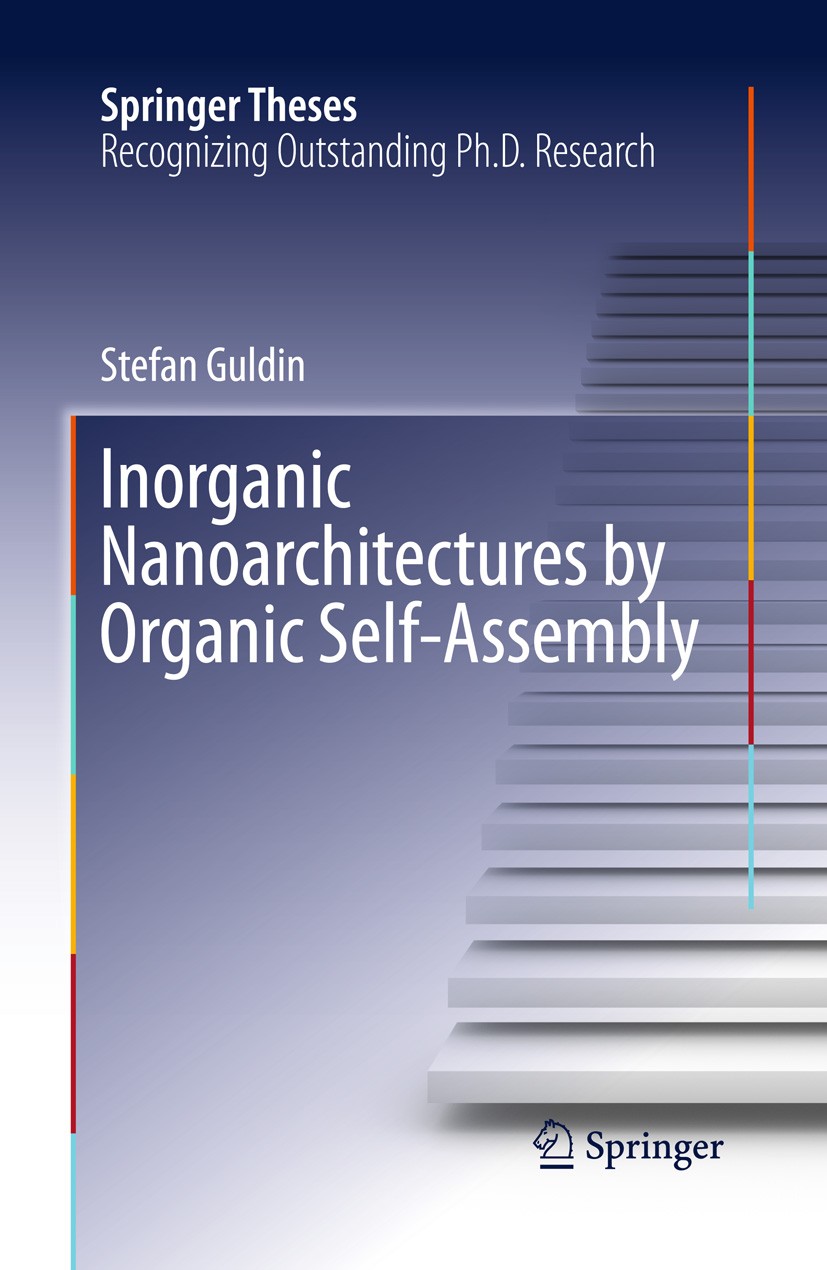| 书目名称 | Inorganic Nanoarchitectures by Organic Self-Assembly |
| 编辑 | Stefan Guldin |
| 视频video | http://file.papertrans.cn/468/467605/467605.mp4 |
| 概述 | Nominated by the University of Cambridge as an outstanding Ph.D. thesis.Novel and unique methods of employing soft matter self-assembly for photonic and optoelectronic devices.Extended tutorials on so |
| 丛书名称 | Springer Theses |
| 图书封面 |  |
| 描述 | Macromolecular self-assembly - driven by weak, non-covalent, intermolecular forces - is a common principle of structure formation in natural and synthetic organic materials. The variability in material arrangement on the nanometre length scale makes this an ideal way of matching the structure-function demands of photonic and optoelectronic devices. However, suitable soft matter systems typically lack the appropriate photoactivity, conductivity or chemically stability. This thesis explores the implementation of soft matter design principles for inorganic thin film nanoarchitectures. Sacrificial block copolymers and colloids are employed as structure-directing agents for the co-assembly of solution-based inorganic materials, such as TiO_2 and SiO_2. Novel fabrication and characterization methods allow unprecedented control of material formation on the 10 – 500 nm length scale, allowing the design of material architectures with interesting photonic and optoelectronic properties. |
| 出版日期 | Book 2013 |
| 关键词 | Designed Nanoscale Structures; Inorganic Thin Film Nanoarchitectures; Macromolecular Self-assembly; Sof |
| 版次 | 1 |
| doi | https://doi.org/10.1007/978-3-319-00312-2 |
| isbn_softcover | 978-3-319-03288-7 |
| isbn_ebook | 978-3-319-00312-2Series ISSN 2190-5053 Series E-ISSN 2190-5061 |
| issn_series | 2190-5053 |
| copyright | Springer International Publishing Switzerland 2013 |
 |Archiver|手机版|小黑屋|
派博传思国际
( 京公网安备110108008328)
GMT+8, 2025-11-20 13:49
|Archiver|手机版|小黑屋|
派博传思国际
( 京公网安备110108008328)
GMT+8, 2025-11-20 13:49


